Contents
Felt breast or violin (lat. Lactarius vellereus) is a conditionally edible mushroom of the Russula family (lat. Russulaceae), which in Our Country has acquired many common nicknames: Milk scraper, Podsuhar, Skripun or Euphorbia. Skripitsa and Skripun this species was nicknamed for the characteristic sound that occurs when two hats are rubbed against each other. The main name of the mushroom is due to the peculiarities of growth – it is usually found in small groups that look like dense piles. The fungus is rarely seen alone.
Description of the felt breast
This is a medium-sized mushroom with a fairly dense, fleshy pulp. In young specimens, it has a white color, but in mature and old mushrooms, the flesh is yellowish. At the site of a cut or break in the fruiting body, milky juice soon begins to stand out abundantly. It smells weak, but pleasant, but its taste is repulsive – the juice is very bitter and burns. In the air it does not change color, but as it dries, it may turn yellow or become covered with red stains.
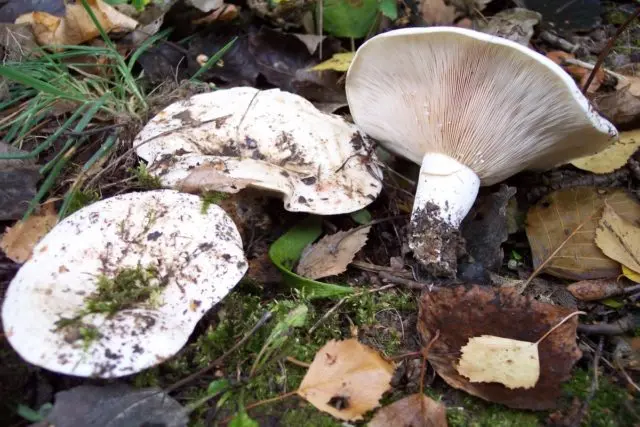
Cap Description
The hat of a mature Felt mushroom reaches 8-18 cm in diameter. In young specimens, it is quite compact, almost ovoid. The edges of the cap at the first stage of development are bent down, but along with the growth of the fruiting body, it opens and takes on the form of a funnel. The surface of the cap is dry and hard, to the touch it is slightly rough, due to the presence of small villi. The color of young mushrooms is white, while in ripened fruiting bodies the cap darkens – first yellow stains appear on it, then the surface becomes covered with brownish spots.
The plates of the hymenophore are quite sparse and free, partially passing to the stem. The color of the plates is whitish-ocher, slightly darker than the main tone of the fungus.

Description of the leg
The leg of the Felt Mushroom is on average 6-8 cm in height, 3-5 cm in diameter. It is cylindrical in shape, slightly tapering at the base. The surface of the leg is felt, slightly rough. Painted white with an admixture of yellow or ocher. The pulp is quite dense.
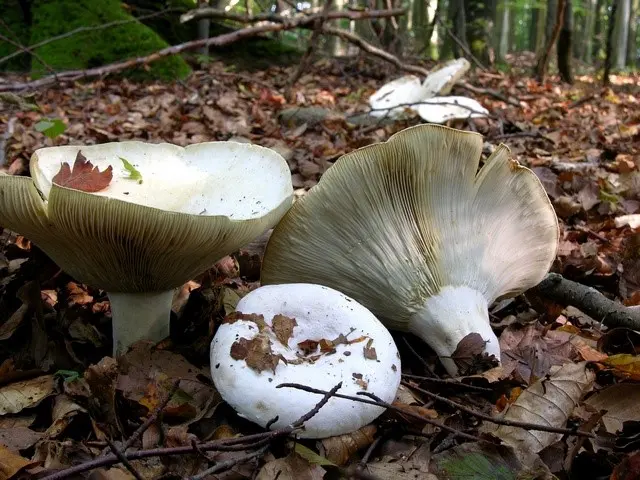
Where and how does Skripun grow?
It is more often possible to find a felted mushroom in mixed and deciduous forests. In large quantities, it grows under birch trees, in fairly dense groups. The fungus is rarely seen alone.
The crop is harvested from mid-August, but sometimes the first mushrooms appear as early as late July. If the autumn turned out to be warm and humid enough, the Skripun bears fruit until the end of September-beginning of October.
On the territory of Our Country, this species grows within the middle latitudes. The area of the greatest distribution is the Urals, Siberia and the Far East.
Edible Felt breast or not
Felt mushroom is a conditionally edible mushroom, due to its specific taste. Its pulp contains a large amount of caustic milky juice, so Skripitsa is not consumed raw.
How Violins are made
Violinists are served on the table in the form of salted blanks. The salting process is extended for a long time due to the preliminary soaking of the mushrooms.
The procedure looks like this:
- The harvested crop is soaked for 3-5 days, regularly changing the water. At this stage, bitterness and caustic milky juice are removed.
- After that, the mushrooms are boiled for 20-25 minutes in a saline solution (1-50 g of salt per 60 kg of milk mushrooms). As an additive, currant leaves, allspice and laurel are used – they will give the mushrooms a pleasant aroma and help remove the remnants of bitterness.
- The actual salting process lasts 1-2 months. The harder the pulp of the mushrooms, the longer it will take to be fully cooked.
To the table Felt milk mushroom can be served as an independent dish or in addition to cold appetizers and salads.
For more information on how to cook Felt Breast, you can learn from the video below:
Composition and value of Violin
This is a low-calorie mushroom – 100 g of an unprocessed fruiting body contains 22 kcal. After salting, the energy value rises to 25-28 kcal.
Nutritional value per 100 grams:
- proteins – 3,08 g;
- fats – 0,35 g;
- carbohydrates – 3,3
The chemical composition of the Felt breast is characterized by a high content of fiber, vitamins (C, PP) and minerals (phosphorus, potassium, sodium, magnesium, calcium).
Medicinal properties of felt mushroom
Skripun is a dietary product that has beneficial properties. It has the following effects on the human body:
- helps to normalize the work of the gastrointestinal tract;
- lowers cholesterol and blood sugar levels;
- has an anti-inflammatory effect;
- strengthens the immune system in general;
- is an antioxidant;
- It stimulates blood formation;
- improves the condition of hair and skin.
Despite the useful properties, the Felt mushroom also has contraindications. It is not recommended to use dishes from this mushroom when:
- pancreatic diseases;
- dysfunction of the gallbladder;
- kidney disease;
- hypertension.
In addition, Skripun is contraindicated in young children and pregnant women.

Twins and their differences
In general, all milk mushrooms are similar to each other, but more often the Felt mushroom is confused with Pepper, Real (or White), and also with White Load.
Felt differs from the Pepper mushroom in its rough hat, which is covered with many small scales. In the Transverse breast, it is smooth to the touch. In addition, the taste of milky juice is not so caustic, although it has peppery notes.
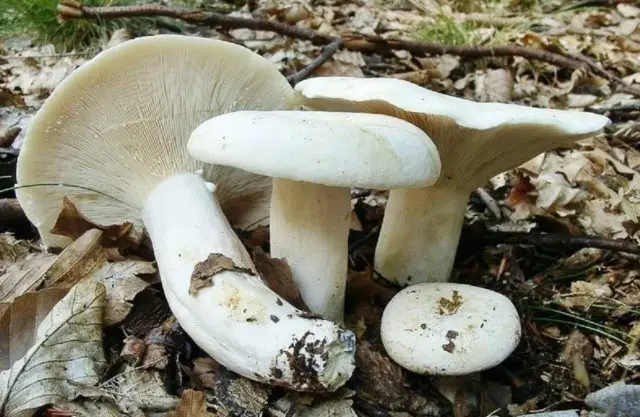
The variety is classified as conditionally edible: the fruiting body becomes ready for use only after prolonged soaking and salting, which removes bitterness from the pulp.
The white podgruzdok is distinguished from the Felt breast by the pubescent and slightly torn edges of the cap. The milky juice of the fungus is absent; there is no abundant secretion at the site of the cut and fracture.
This is a conditionally edible variety with mediocre taste. It is eaten in salted form.
A real or White mushroom differs from the Violinist in its hat – it is densely hung with shaggy fringe along the edges. The milky juice of the fungus is white, at the cut site it quickly darkens, acquiring a yellowish tint. In the Felt Breast, the juice begins to change color only as it dries.
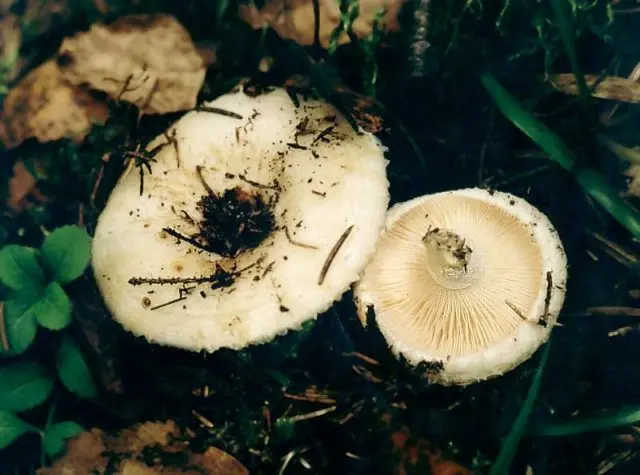
This mushroom is considered a conditionally edible mushroom, which, after removing the bitterness, is used for salting.
Growing Violin at home
Another advantage of the Felt mushroom, in addition to the low level of worminess, is its high yield. This makes it an ideal candidate for growing at home.
The mushroom planting process is as follows:
- The first step is to prepare the soil. The selected site is dug up and abundantly fertilized with peat. A prerequisite is that deciduous trees, preferably birches, should grow in the place where the Felt mushroom is grown. Poplar, hazel, willow and larch are also suitable.
- From May to September, mycelium is laid in the soil. It is purchased in a specialized store. As a soil for growing Violin, a mixture is used, which contains sawdust from hardwood trees. Additionally, fallen leaves, straw and moss are added to it. The mycelium is fed with an aqueous solution of sugar and yeast.
- The second way of planting Skripun involves grinding it. It is better to use an overripe mushroom as planting material. Then pieces of the fruiting body are poured into a mixture of peat and sawdust. The container with crushed mushrooms is covered with a lid, in which there are small holes, and left in this form for 2,5-3 months. It is advisable to remove the container in a room with a temperature not lower than + 23 ° C.
- When the mycelium develops sufficiently, it is transplanted into small holes under deciduous trees. After this, the recesses are filled with a substrate, moss is laid and covered with fallen leaves.
Caring for the mycelium consists in moderate watering. In hot weather, the planting area is hidden under an artificial canopy. In the winter months, it is recommended to insulate the mycelium with a pile of fallen leaves.
Harvest homemade Felt mushrooms can be harvested from mid-July to August.
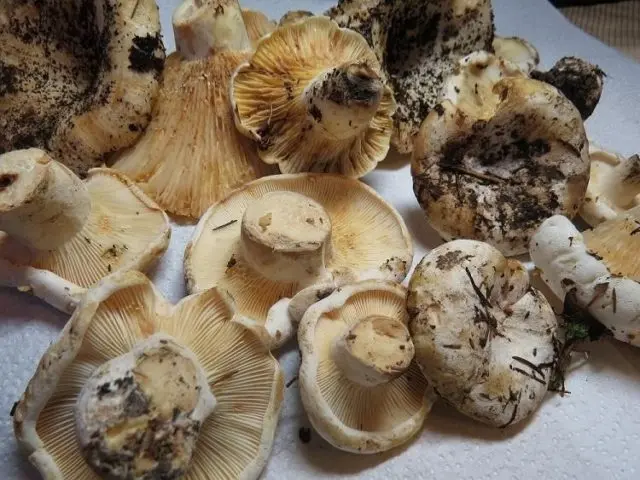
Conclusion
Felt breast or violin is a high-yielding mushroom that can be grown on your own in the garden. It does not differ in special taste qualities, however, good preparations for the winter are obtained from the harvested crop. He has no toxic twins.









